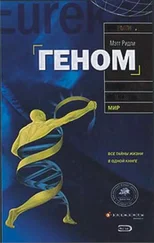Chorney M. J. et al., 1998. A quantitative trait locus associated with cognitive ability in children. Psychological Science 9: 1–8.
Galton F. 1883. Inquiries into human faculty . Macmillan, London.
Goddard H. H. 1920. — цит. по кн.: Gould S. J. 1981. The mismeasure of man . Norton, New York.
Neisser U. et al. 1996. Intelligence: knowns and unknowns. American Psychologist 51: 77–101.
Philpott M. 1996. Genetic determinism. In: Tam H. (ed.), Punishment, excuses and moral development . Averbury, Aldershot.
Wright L. 1997. Twins: genes, environment and the mystery of identity . Weidenfeld and Nicolson, London.
Scarr S. 1992. Developmental theories for the 1990s: development and individual differences. Child Development 63: 1–19.
Daniels M. et al. 1997. Of genes and IQ. In: Devlin B. et al. (eds), Intelligence, genes and success . Copernicus, New York.
Herrnstein R. J., Murray C. 1994. The bell curve . The Free Press, New York.
Haier R. et al. 1992. Intelligence and changes in regional cerebral glucose metabolic rate following learning. Intelligence 16: 415–426.
Gould S. J. 1981. The mismeasure of man . Norton, New York.
Furlow F. B. et al. 1997. Fluctuating asymmetry and psychometric intelligence. Proceeding of the Royal Society of London, Series B 264: 823–829.
Neisser U. 1997. Rising scores on intelligence tests. American Scientist 85: 440–447.
Freeman D. 1983. Margaret Mead and Samoa: the making and unmaking of an anthropological myth . Harvard University Press, Cambridge, MA.
Harlow H. F. et al. 1971. From thought to therapy: lessons from primate laboratory. American Scientist 59: 538–549.
Pinker S. 1994. The language instinct: the new science of language and mind . Penguin, London.
Dale P. S. et al. 1998. Genetic influence on language delay in two-year-old children. Nature Neuroscience 1: 324–328.
Paulesu E., Mehler J. 1998. Neuroscience: Right on in sign language. Nature 392: 233–234.
Carter R. 1998. Mapping the mind . Weidenfeld and Nicolson, London.
Bishop D. V. M. et al. 1995. Genetic basis of specific language impairment: evidence from twin study. Developmental Medicine and Child Neurology 37: 56–71.
Fisher S. E. et al. 1998. Localisation of a gene implicated in a severe speech and language disorder. Nature Genetics 18: 168–170.
Gopnik M. 1990. Feature-blind grammar and dysphasia. Nature 344: 715.
Fletcher P. 1990. Speech and language deficits. Nature 346: 226.
Gopnik M. et al. 1996. Genetic language impairment: unruly grammars. In: Runciman W. G., Maynard Smith J., Dunbar R. I. M. (eds), Evolution of social behaviour patterns in primates and man , p. 223–249. Oxford University Press, Oxford;
Gopnik M. (ed.) 1997. The inheritance and innateness of grammars . Oxford University Press, Oxford.
Gopnik M., Goad H. 1997. What underlies inflectional error patterns in genetic dysphasia? Journal of Neurolinguistics 10: 109–138;
Gopnik M. 1999. Familial language impairment: more English evidence. Folia Phonetica et Logopedia 51: 5–9.
Pinker S. 1994. The language instinct: the new science of language and mind . Penguin, London.
Mineka S., Cook M. 1993. Mechanisms involved in the observational conditioning of fear. Journal of Experimental Psychology: General 122: 23–38.
Dawkins R. 1986. The blind watchmaker . Longman, Essex.
Amos W., Harwood J. 1998. Factors affecting levels of genetic diversity in natural populations. Philosophical Transactions of the Royal Society of London, Series B 353: 177–186.
Rice W. R., Holland B. 1997. The enemies within: intergenomic conflict, interlocus contest evolution (ICE), and the intraspecific Red Queen. Behavioral Ecology and Sociobiology 41: 1–10.
Majerus M. et al. 1996. Evolution: the four billion year war . Longman, Essex.
Swain A. et al. 1998. Dax1 antagonizes Sry action in mammalian sex determination. Nature 391: 761–767.
Hamilton W. D. 1967. Extraordinary sex ratios. Science 156: 477–488.
Amos W., Harwood J. 1998. Factors affecting levels of genetic diversity in natural populations. Philosophical Transactions of the Royal Society of London, Series B 353: 177–186.
Rice W. R. 1992. Sexually antagonistic genes: experimental evidence. Science 256: 1436–1439.
Haig D. 1993. Genetic conflicts in human pregnancy. Quarterly Review of Biology 68: 495–531.
Holland B., Rice W. R. 1998. Chase-away sexual selection: antagonistic seduction versus resistance. Evolution 52: 1–7.
Rice W. R., Holland B. 1997. The enemies within: intergenomic conflict, interlocus contest evolution (ICE), and the intraspecific Red Queen. Behavioral Ecology and Sociobiology 41: 1–10.
Hamer D. H. et al. 1993. A linkage between DNA markers on the X chromosome and male sexual orientation. Science 261: 321–327;
Pillard R. C., Weinrich J. D. 1986. Evidence of familiar nature of male homosexuality. Archive of General Psychiatry 43: 808–812.
Bailey J. M., Pillard R. C. 1991. A genetic study of male sexual orientation. Archives of General Psychiatry 48: 1089–1096;
Bailey J. M., Pillard R. C. 1995. Genetics of human sexual orientation. Annual Review of Sex Research 6: 126–150.
Hamer D. H. et al. 1993. A linkage between DNA markers on the X chromosome and male sexual orientation. Science 261: 321–327.
Bailey J. M. et al. A family history study of male sexual orientation: no evidence for X-linked transmission. Behaviour Genetics , in press.
Blanchard R. 1997. Birth order and sibling sex ratio in homosexual versus heterosexual males and females. Annual Review of Sex Research 8: 27–67.
Blanchard R., Klassen R 1997. H-Y antigen and homosexuality in men. Journal of Theoretical Biology 185: 373–378;
Arthur B. I. et al. 1998. Sexual behaviour in Drosophila is irreversibly programmed during a critical period. Current Biology 8: 1187–1190.
Читать дальше
Конец ознакомительного отрывка
Купить книгу





![Twelve Angel - Супер Ген Бога. Том 13 [1201-1300 главы]](/books/408699/twelve-angel-super-gen-boga-tom-13-1201-thumb.webp)
![Twelve Angel - Супер Ген Бога. Том 12 [1101-1200 главы]](/books/408700/twelve-angel-super-gen-boga-tom-12-1101-thumb.webp)
![Twelve Angel - Супер Ген Бога. Том 11 [1001-1100 главы]](/books/408701/twelve-angel-super-gen-boga-tom-11-1001-thumb.webp)
![Twelve Angel - Супер Ген Бога. Том 10 [901-1000 главы]](/books/408702/twelve-angel-super-gen-boga-tom-10-901-thumb.webp)
![Twelve Angel - Супер Ген Бога. Том 9 [801-900 главы]](/books/408703/twelve-angel-super-gen-boga-tom-9-801-900-glavy-thumb.webp)
![Twelve Winged Dark Burning Angel - Супер Ген Бога. Том 2 [101-200 главы]](/books/412125/twelve-winged-dark-burning-angel-super-gen-boga-tom-2-101-200-glavy-thumb.webp)
![Twelve Winged Dark Burning Angel - Супер Ген Бога. Том 1 [1-100 главы]](/books/412126/twelve-winged-dark-burning-angel-super-gen-boga-tom-1-1-100-glavy-thumb.webp)
